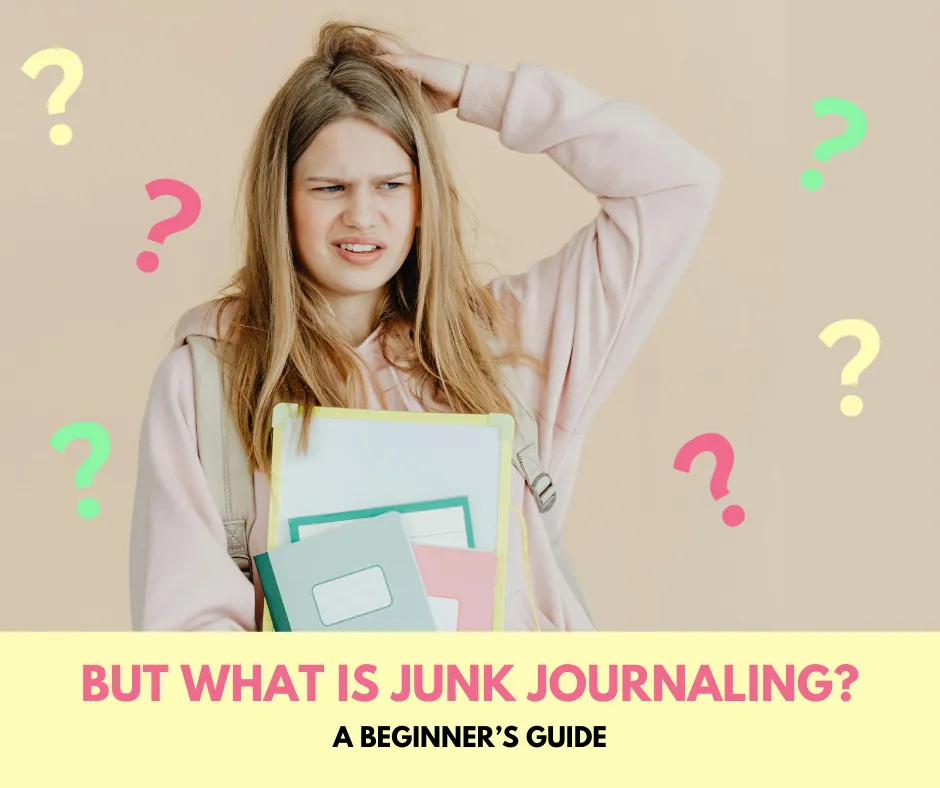
Junk Journaling for Beginners: Everything You Need to Know
Junk journaling has become a beloved creative hobby for those who love paper crafting, storytelling, and artistic expression. If you’re new to the concept, you might be wondering: What exactly is junk journaling? How is it different from scrapbooking? How do I get started? Does it cost a lot of money? This blog post will guide you through the basics and help you dive into the world of junk journaling with confidence.
What is Junk Journaling?
Junk journaling is a form of creative journaling that involves using a mix of materials—both new and repurposed—to create artistic and personalized pages. Unlike traditional journaling, which often focuses on writing, junk journaling incorporates decorative elements, textures, and layers, making each page a work of art.
A junk journal can be used for a variety of purposes, including:
- Memory keeping (similar to a scrapbook but with a more free-form approach)
- Daily journaling or writing prompts
- Creative expression through mixed media
- Collaging with ephemera and vintage materials
- Travel documentation
- Gratitude journaling
The term junk journal comes from the idea of using “junk” materials—scraps of paper, old book pages, receipts, fabric scraps, ticket stubs, postcards, and anything else that might otherwise be discarded—to craft something meaningful.
How is Junk Journaling Different from Scrapbooking?
At first glance, junk journaling and scrapbooking may seem similar since both involve paper crafting and memory keeping. However, they have distinct differences:
1. Structure and Format
- Scrapbooking is often structured, with layouts designed around photographs and specific themes (e.g., weddings, birthdays, vacations). Pages are usually uniform and follow a set format.
- Junk journaling is more free-form, with no rules about page design, size, or materials. You can add pockets, fold-out pages, sewn elements, and even non-paper items like dried flowers or fabric swatches.
2. Materials Used
- Scrapbooking typically uses store-bought supplies, including decorative paper, stickers, embellishments, and album inserts.
- Junk journaling incorporates found and repurposed materials like magazine clippings, ticket stubs, handwritten notes, and vintage ephemera.
3. Purpose
- Scrapbooking focuses on preserving memories in an organized, often chronological, manner.
- Junk journaling can be anything you want—artistic expression, storytelling, a place for random thoughts, or an interactive, ever-evolving project.
How Do I Get Started with Junk Journaling?
Starting a junk journal is easy, and there are no strict rules. Follow these steps to begin your creative journey:
1. Choose Your Journal Base
You can use just about anything as your junk journal base, such as:
- A store-bought blank journal
- An old book (altered book journaling)
- Handmade signatures bound together with string, rings, or glue
- A repurposed planner or notebook
2. Gather Materials
You don’t need expensive supplies to start junk journaling. Look around your home for materials like:
- Scrap paper (wrapping paper, notebook pages, newspaper, sheet music)
- Vintage book pages or dictionary pages
- Ticket stubs, postcards, and greeting cards
- Envelopes and paper bags (great for creating pockets!)
- Old fabric scraps or lace
- Stickers, washi tape, and stamps
- Dried flowers or pressed leaves
3. Decide on a Theme or Style (Optional)
While junk journaling is free-form, some people enjoy working within a theme, such as:
- Vintage
- Botanical/nature
- Travel
- Minimalist
- Grunge or distressed
4. Start Creating Pages
There’s no right or wrong way to design your pages! Here are some fun elements you can incorporate:
- Collaging: Layering different types of paper and ephemera
- Pockets and tuck spots: Creating small spaces to hold notes or mementos
- Stamping and stenciling: Adding texture and interest
- Handwritten notes: Journaling, poetry, or inspirational quotes
- Sewing or stapling: Stitching pages together or adding fabric details
- Mixed media elements: Watercolor, ink splatters, or acrylic paint
Does Junk Journaling Cost a Lot of Money?
No! Junk journaling can be as budget-friendly or as extravagant as you choose. Many people start with materials they already have at home, making it a cost-effective hobby. If you want to purchase specialty papers or vintage ephemera, you can find affordable options at thrift stores, flea markets, or online marketplaces.
If you're looking for free or cheap supplies, try:
- Junk mail: Envelopes, postcards, advertisements
- Old books and magazines: Perfect for vintage pages
- Fabric scraps: From old clothes or linens
- Tea-dyed or coffee-dyed paper: Adds an aged look
- Printable ephemera: Many creators sell digital downloads for a low cost, allowing you to print your own elements
Common Questions About Junk Journaling
Do I Need to Be Artistic to Junk Journal?
Not at all! Junk journaling is about creative expression, not perfection. Anyone can do it, regardless of artistic ability.
Can I Junk Journal Digitally?
Yes! Digital junk journaling has become popular, allowing users to create pages using graphic design software. This is a great option for those who love the aesthetic but prefer working on a tablet or computer.
How Do I Store or Organize My Junk Journals?
Depending on your style, you might create multiple journals. Consider:
- A dedicated shelf for completed journals
- A box or basket for loose pages and supplies
- A filing system for themed journals (e.g., travel, daily journaling, art journals)
Where Can I Find Inspiration?
- Pinterest and Instagram: Look up junkjournal for endless inspiration
- YouTube: Tutorials on techniques and DIY journal making
- Facebook groups: Communities for sharing and learning
Final Thoughts
Junk journaling is a rewarding and personal creative outlet that allows you to repurpose materials, express yourself artistically, and document your thoughts and memories in a unique way. Best of all, it’s accessible to everyone—whether you have a big budget or none at all.
The most important thing? Just start! Grab some paper, glue, and a pair of scissors, and let your creativity guide you. Happy journaling!